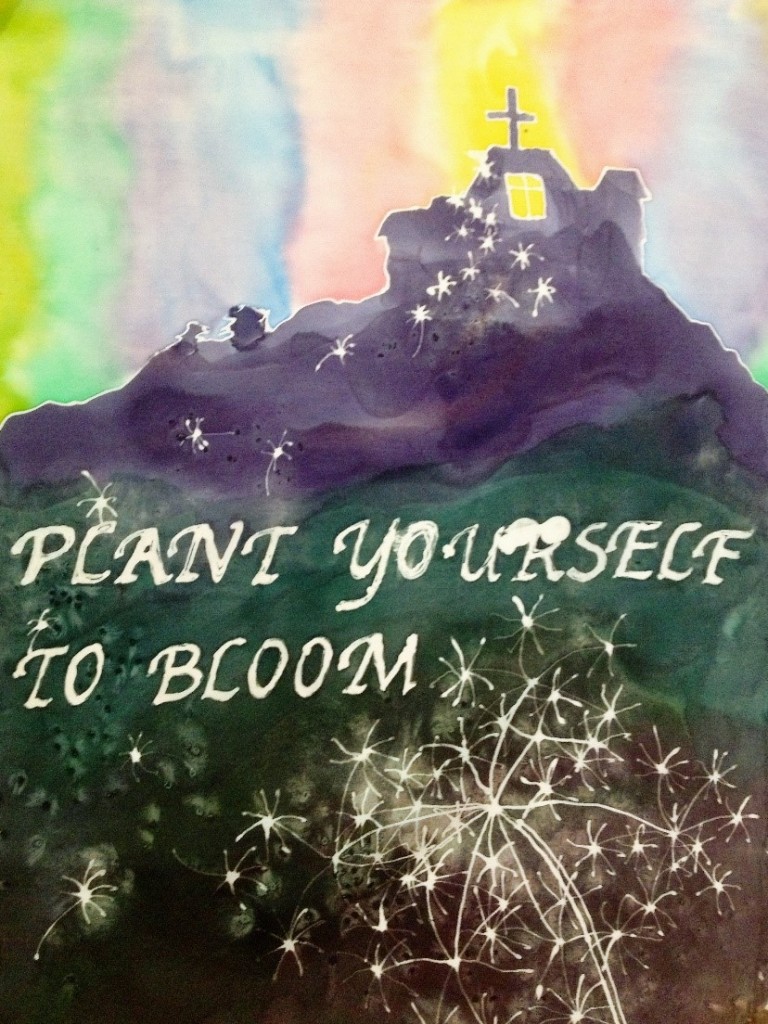King George Secondary School
It’s a city school located in downtown with MYP IB program. We observed two art classes with junior high and senior high. The teacher, named Matt, has build rapport and mutual trust with school and students for he has been there for 5 years.
Hook Question:
In the first junior high art class, Matt showed a 10 mins demo on blind contour drawing and followed by student practice. I like the way he used hook questions to connect students’ life experience. For example, he first asked if there was anyone played video games last weekend and then explained blind contour drawing as you playing video games or playing piano without looking at the keyboard. By doing this, students got less worried about trying out something new.
Class Management:
The number of each class was around 10, comparing the number of our teacher candidates were more than 20, so the ratio was 1:2. They were kind of being overwhelmed by the big cohort of people. But the students really know about their teacher and his expectation, both classes went really well until the end. In the senior high art class, students were allowed to take photographs out of school in community, but within the permitted areas Matt provided in the map.
Technology Assistant:
Projector, Youtube video and images from google have been mostly used.
Classroom Setting:
Kiln, cameras, cabinet to place paint, adequate sunlight, even also has bike repair studio with full sets of tools.
Communication with students:
approachable and understanding (talking to students more like friends), clear and brief instruction, provides step by step guidelines, effective time management
Assessment:
Matt mentioned it is hard for him to assess both IB students and non IB students in the same class. Since it is a small school, if mark the students too hard, they would lose their interest in taking art class, which might lead to lose his job. Higher grade students are more motived than lower grade.
Mulgrave IB school
That is one of the top schools in BC. Since it is also an IB school, I imagined the students there must work so hard and stressed out. Actually, it blew me away to see the enlightened students from a new perspective. I interviewed a student from art class and asked how she felt about the workload. She surprised me by saying that the workload was manageable and she liked being challenged. She knew all she was doing would be good for her future and also enjoyed the various subjects she could choose from. I believe IB program not only develops the “genius” but also 21st century skills as well as promoting student maturity and self-regulation.
Class Observation:
Christine, the art teacher in senior school, is very professionalism and has a good heart. She gave us a warm welcome through verbal language and significant amount of eye contact. She also speaks at medium speed with clarity to us and all her students including ESL students. There were only 6 students in her class and each year getting fewer students for most of them became more interested in film making. That made me start to think how to highlight the value of visual art and address its unique and aesthetic characteristic.
The big idea of this art class is self identity exploration through all kinds of media. The students firstly needed to work on their own art journal with self portrait sketches and did experiments with all different materials; secondly, they would do research on the artists who inspired them with their art techniques or skills; finally, students will work on the final art project and reflective essay.
Assessment:
In each stage, students were welcome to critique each other’s art work and provide feedback. Before doing this, they did self-evaluation by placing three cards with rubrics in order from the most strongest area they have, to the area they think they need to work on. The three rubrics are conceptual qualities, work connects to research, technical competence/ elements and principles. She emphasizes on each area equally. I like the way she values contributions from different perspective, so that art education is more holistic and balanced.
Field Trip Observation:
We went to visit Golden Smith Art Gallery with students and Christine. A lady who worked in gallery led the tour. I was surprised to see their reflective thought on arts were also mature and provided great insight. Each person got a chance to speak out and engaged in the discussion. After each artwork being presented, Christine would raise another question to summary up and connected these questions/art works/techniques to her students’ personal projects: letting them think about what they can apply into their art making.
Observation on Film Class
32 students, way more than the students in art class. New studio with updated equipments. Make me realize the significance of media education. But youth already spend too much time on media and electronic equipment, I think we should encourage them to take more courses of working with body, as fine art, drama, dance etc. Rubric on assessment: 50% production, 25% theory, 25% analysis. Students come into this class at any beginning of semester. In order to make each one to catch up with the rest of class, the teacher is giving one to one instruction to a newcomer.
 Follow
Follow
